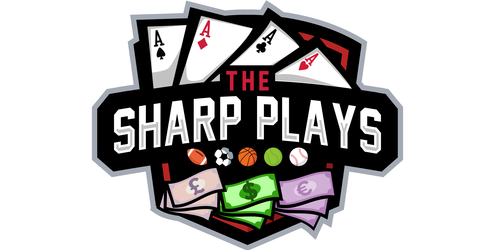When I launched the TSP Index, I knew it would raise eyebrows. After all, why would a financial-style momentum index be relevant in sports betting?
But for me, the parallel was obvious.
In the stock market, price movements are driven by buyers and sellers. When buyers have control, prices rise. When sellers take over, prices drop. Momentum changes are signaled by a shift in control.
In sports betting, the dynamic is the same — except the participants are sharp money vs. public money.
🔁 Betting Is Cyclical — Just Like the Markets
Every betting market experiences runs and streaks. Nobody wins two, loses one in perfect rotation. It’s more like:
- Win 4, lose 3
- Win 6, lose 4
- Lose 5, win 7…
Sharps and public bettors alike go on streaks. Yes, the public is a long-term loser — but even the squares get hot! They have to or they’d lose interest. But here’s the key: public streaks are usually shorter than sharp streaks.
So, what if we could track those streaks — and better yet — anticipate the turn?
That’s the entire goal of the TSP Index.
🎲 Why This Isn’t Just a Random Guessing Game
If you’ve ever played craps, you know the feeling of trying to time the table. You’re watching for heat. When it’s cold? You avoid the pass line. When it’s hot? You press.
But craps is random. Sports betting isn’t.
Sports betting is a skill game, and it’s cyclical like investing. Each year, sharps and public bettors trade control back and forth. Through deep-dive analysis of sportsbook data since 2001, I’ve discovered consistent seasonal trends:
🟢 Best Months for Sharps:
- September – mid-October
- December
- March
- May
🔴 Best Months for Public:
- February
- July
- November
These aren’t flukes — the data backs them.
📉📈 What the Index Does
The TSP Index tracks performance trends between sharp and public sides. That’s it.
It doesn’t pick winners.
It doesn’t read minds.
It tracks market momentum — just like any good financial tool.
- If sharps are hot and the index dips → 🔻 A reversal may be starting
- If the public is hot and the index starts to rise → 🔺 Sharp momentum might be returning
- If both sides are choppy (up-down-up) → 🚫 Better to pause until a trend forms
🔧 How to Use the TSP Index
Here’s how to read the chart:
- Above the 5-day moving average and trending up → Value side (sharps) in control
- Below the 5-day average and trending down → Public in control
📊 Index Ranges to Watch
- 90–100: 🔥 Sharps are extremely hot. But beware — this level rarely lasts more than 2 days.
- 50–60: 🔥 Public is on a heater. Each time the index hit ~55, it rebounded the next day.
Nothing runs forever. When the index is extreme, reversal is usually imminent.
🚦 Practical Application
Let’s say:
- The sharps are on an 8-day win streak.
- The index drops today for the first time.
👉 That first down day might be the canary in the coal mine.
Rather than bet blindly like the streak’s still alive, you pause. If it’s a one-off loss, no harm. But if it’s the start of a reversal, you just saved yourself from being on the wrong side.
Example in Action:
- The index declined last Friday morning
- That weekend: sharp sides got crushed
- Public sides? MLB: 21-7-2
- Even “Poison” and “Freeze” (two public personas) were 🔥
That’s the power of momentum. And the index called it.
🧠 Strategic Takeaways
The index isn’t perfect — no tool is. But here’s how I use it:
| Index Trend | My Approach |
|---|---|
| Trending Up | Follow sharps, value plays, algorithms. Fade the public. |
| Trending Down | Personally, I pass. Let the chaos settle. |
| Choppy / No Clear Trend | Wait. One side will take control soon enough. |
Eventually, I plan to integrate the index directly into algorithm selection. In downtrends, only elite value plays will qualify. In uptrends, the requirements can relax slightly since momentum is with us.
🔚 Wrapping It Up
A sports betting index might sound crazy — but if you’ve been following since March, you’ve seen its predictive value for yourself. It’s not magic. It’s market analysis.
Momentum is real. Trends shift. And if you know when to press and when to pause, your bankroll will thank you.
So next time you’re wondering whether to jump on that sharp play or fade a public run, check the index. It just might keep you out of harm’s way… or put you in perfect position for a heater.
🧭 Stay sharp. Stay disciplined.
Good luck in your action!
~ The Sharp Plays
